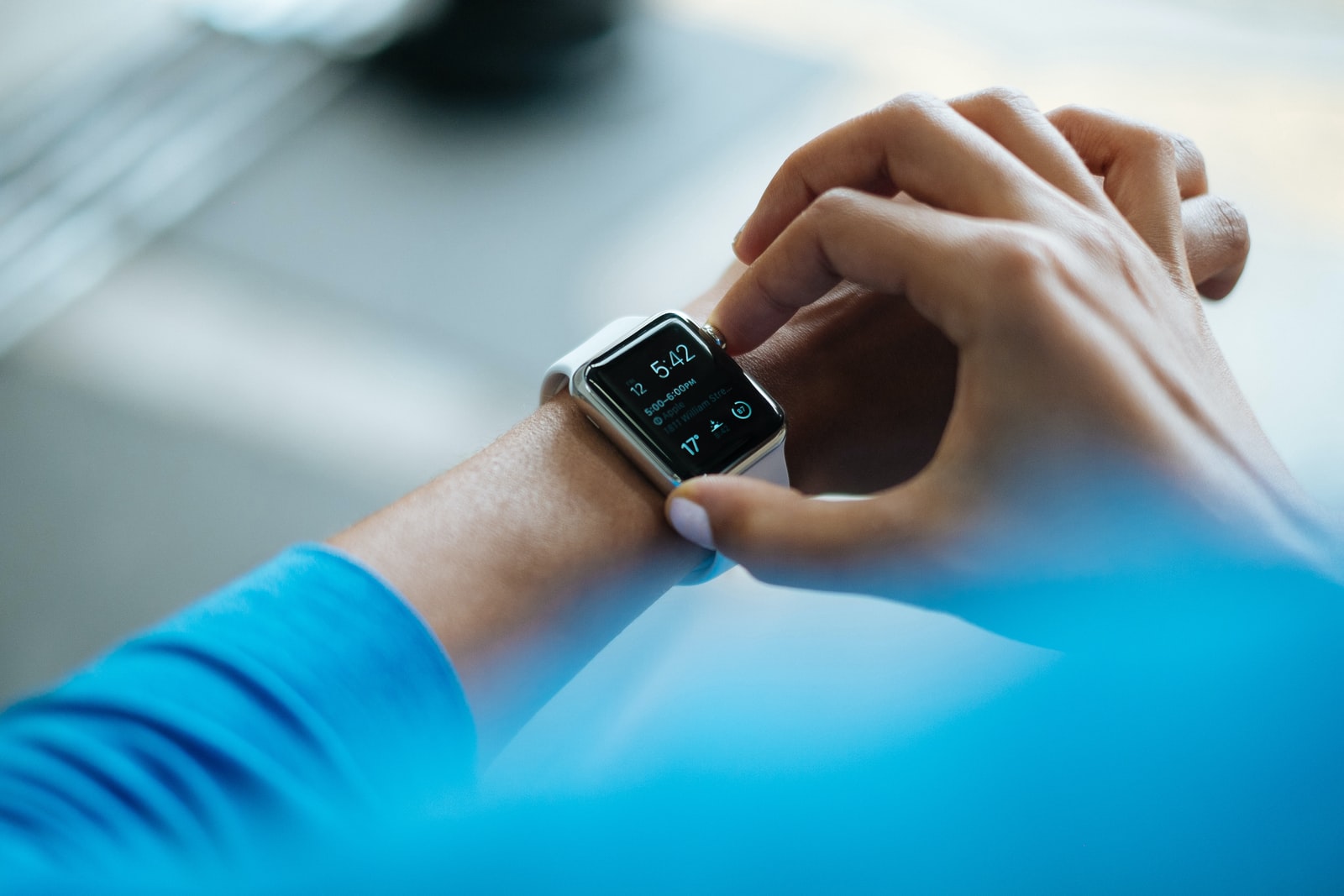Hands up who received a Fitbit for Christmas? Or a Jawbone? Apple Watch? Well, I know one million wearable devices were sold in the UK this festive season so there are many of you reading this with something new on your wrist.
According to marketsandmarkets, the global market for wearables will have a forecasted worth of £5.33 billion by 2018. Question is, with the ownership of wearable devices on the rise, do they have a place at work?
A study carried out by Cornerstone OnDemand in 2015, revealed almost two thirds (63 percent) of British workers say they would be happy to wear a fitness tracker device supplied by their employer to help them monitor their health and wellbeing. Additionally, 61 percent say they would feel more motivated if their employer recognised their fitness and health efforts.
Corporate wellness is becoming increasingly popular among large companies in particular. Many will provide fitness wearables such as Fitbits or Jawbone to their employees and encourage them to take part in social health challenges, such as daily step challenges or a calories burned goal each week to promote wellness.
The purpose of providing these wearable technologies to employees is to improve performance, and if fitness tracking software and devices help to motivate workers and reduce sickness, then organisations will undoubtedly reap these benefits alongside employees.
Four ways wearables can be implemented within the workplace
Whether employees are given a wearable device or bring their own wearable to work – companies have huge scope to make the most of this technology trend to better support the wellbeing of their workforce.
The most important point before considering using wearable technology in the workplace is to get employee buy-in to access the data collected. There’s a big difference between monitoring the wellbeing of your employees and surveillance.
- Pumping up the productivity
The adoption of wearables in the workplace can significantly increase productivity – it’s proven. Experts at Goldsmiths, University of London, conducted a study which revealed that wearable technologies boost employee productivity by 8.5 percent. Job satisfaction levels also increase by 3.5 percent.
Wearables provide employers with data and insights that can be used to improve performance and satisfaction. Again, I can’t make the point enough, employees must know and understand the data that is being collected. It has to be clear how you’ll use it too.
- Lower the heart rate
Wearable devices give us a host of health and wellbeing benefits as well. With a happier, healthier workforce, a business thrives. Wearables can monitor heart rates, distance travelled, sleep patterns and much more. Knowing information like this, employers are able to help employees by offering ways for them to move around more or adjust workloads on a day following a bad sleep.
Furthermore, data from wearable devices can support employers who wish to address employee stress levels within their organisation.
A study done by Cornerstone OnDemand in the US found that four out of five employees would be happy to use company-provided wearables that track health and wellness. Additional perks or compensation — such as a five percent end-of-the-year bonus, exercise program discounts, extra annual leave, flexible schedule and less work hours — would encourage sign-ups as well.
- Mr Motivator
Boosting employee motivation is on every organisation’s list of priorities. Wearable technology offers a host of new platforms that make motivation in the workplace more visually and physically engaging.
Not only can wearables motivate you to be more productive, they can help you be more efficient and work better. For example, a device can monitor your posture and notify you when you are sat in a poor position for too long, helping you address an issue before it becomes a real problem.
- Attraction
They say money doesn’t buy happiness; a phrase that holds true for today’s workforce who want employers to offer more than just a pay cheque.
A well implemented wellbeing programme using wearables in the workplace can make a company very attractive to future talent. Especially when linked to additional perks, wearables in the workplace can give a company an edge for talent they are trying to attract.
GEN-Y VS GEN-X
Our UK wearables and wellness survey found some interesting insight into the differing opinions amongst generation y and generation x. While 80 percent of employees believe their employers have an important role in supporting health and wellbeing at work, 25 percent feel their employer is ‘not supportive’.
The results suggest some age groups are more engaged than others when it comes to their employer having a role in their personal wellbeing. Middle-aged workers are reportedly the least likely to endorse their employer’s efforts, with only 19 percent of 45 to 54-year-olds saying they are ‘very supportive’, compared to 36 percent of 25 to 34-year-olds. Employees aged between 45 and 54 are also the least likely to be happy to wear an employer-provided fitness device, with only 62 percent prepared to do so, compared to 81 percent of 25 to 34-year olds.
What’s clear from the study is that different age groups feel differently about wearables in the workplace. While many workers say they feel more motivated by technologies such as wearable fitness trackers, employers must find out what supports and motivates their staff, and invest in that rather than a blanket approach.
So, will wearables drive better corporate wellness? The answer is yes, but only if the employees are bought into the idea, the data isn’t misused, and different generations are considered differently. There is a wealth of benefit to be had from embracing this new technology in the workplace – it’s all about considering the right approach for your employees.

Christine Chenneour
Global Vice President Human Resources Leader with significant experience influencing strategic business results. People cultured, self-motivated, energetic and commercially aware with strong analytical and IT skills, who is able to add measurable value through the creation and implementation of scalable solutions across multiple geographies.


